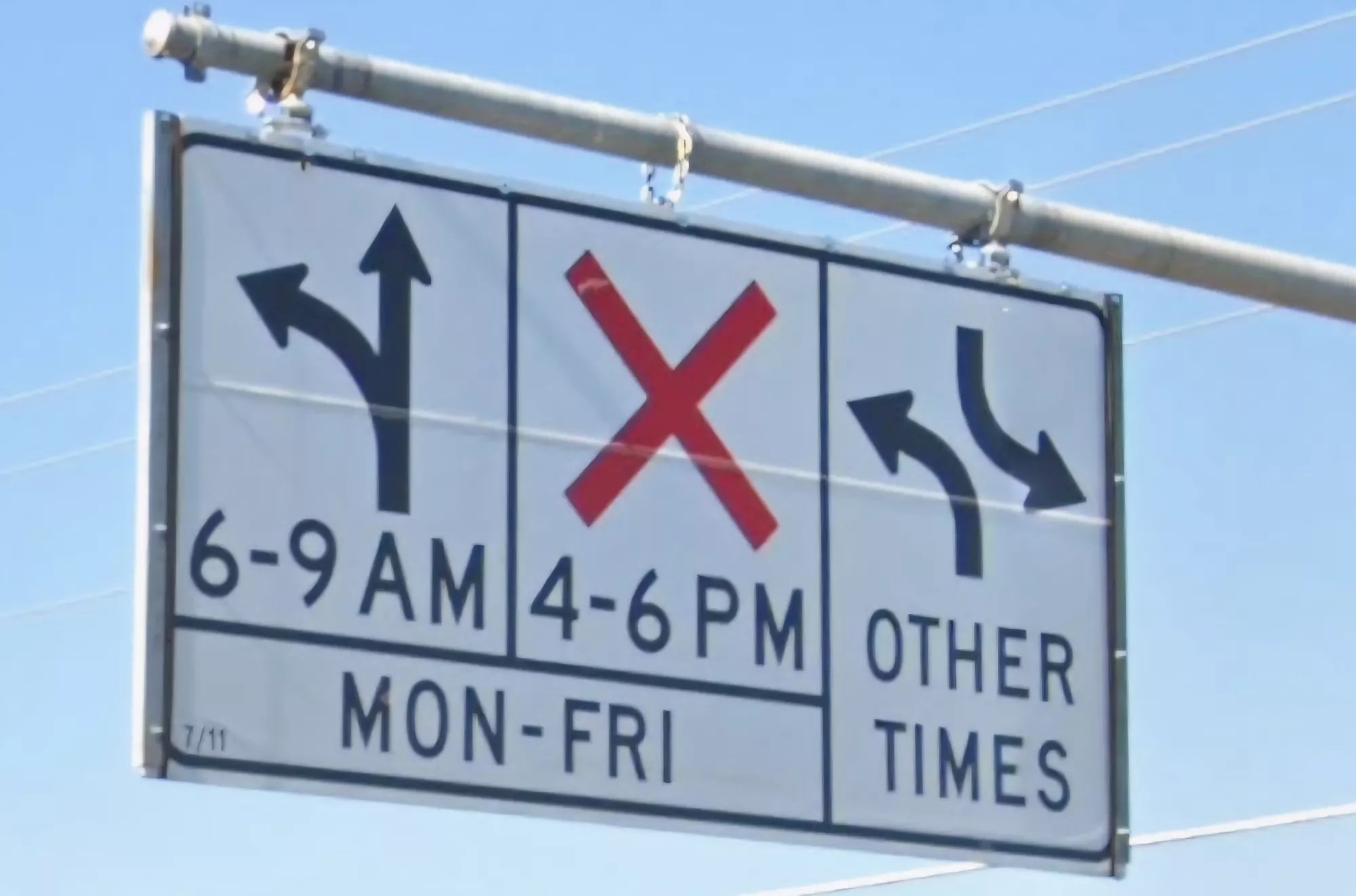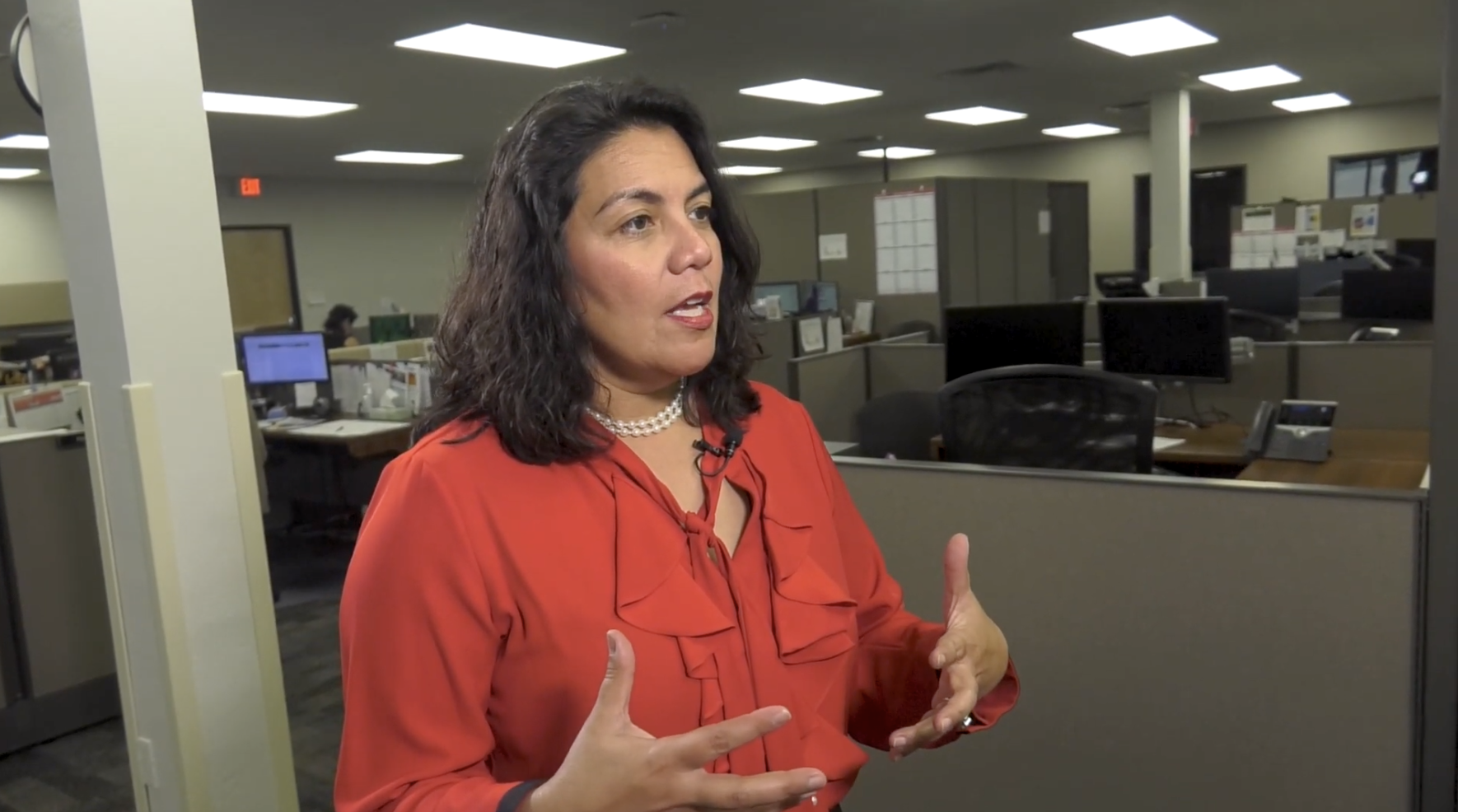
Google Maps

Audio By Carbonatix
Editor’s note: This story was first published May 22 and updated May 23 to include a statement from Phoenix City Councilmember Laura Pastor.
***
Phoenix City Council’s meeting on Wednesday was a five-hour barnburner – the house was packed, dozens spoke during public comment and the council passed a huge budget. But one thing didn’t happen, to the dismay of several residents in attendance.
The city didn’t axe the “suicide lanes” on Seventh Avenue and Seventh Street.
If you haven’t driven on them, thank your lucky stars. Running from McDowell Road to Dunlap Avenue, these two major arteries in and out of downtown Phoenix bar drivers from using the middle lane to turn left – but only at certain times of the day, when the lanes are meant exclusively for cars heading south or north. Complicated traffic signs explaining the lane rules add to the confusion, making it difficult for the unfamiliar driver to understand what the hell is going on.
Phoenix, make your New Year’s Resolution Count!
We’re $11,000 away from reaching our $30,000 year-end fundraising goal. Your support could be what pushes us over the top. If our work has kept you informed, helped you understand a complex issue, or better connected you to your community, please consider making a contribution today.
The suicide lanes appear to be widely unpopular: Roughly 84% of people who responded to a FOX 10 poll said the city should do away with them. For anyone who lives in Phoenix, listening to groaning about the confusing lanes – and seeing accidents take place as a result of them – is a common occurrence.
Entering Wednesday’s city council meeting, there was some hope that the notorious reverse lands would finally meet their end. A citizen petition, signed by roughly 5,000 people, asked the council to get rid of the lanes for good. The lanes are dangerous and are also a drag on local businesses, the petition argued. “Killing” them, it said, “will make it a more enjoyable experience to drive, walk, and bike on the 7’s, and will make our communities safer.” The petition asked that the center lane become a full-time turn-only lane, rather than one that switches to one-way traffic in the morning and late afternoon.
The council discussed it for a few minutes, and several residents spoke in support of the petition. But instead of taking action, the council punted. In a unanimous vote, the council instructed the city’s Streets Transportation Department to complete a study and present it to the council by December 2026, more than 18 months away.
Activists who spearheaded the petition were pissed.
“What that council decision yesterday said to us is that our neighborhoods don’t matter,” said Stacey Champion, who lives near a reverse lane. “Our neighborhoods that aren’t as wealthy, I guess, just don’t fucking matter to them.”
Much of Champion’s ire is primarily reserved for Phoenix City Councilmember Laura Pastor, whose district covers most of the reverse lanes. During the meeting Wednesday, Pastor implied – but didn’t explicitly say – that she wanted to end the reverse lanes. She said residents’ desires to end the reverse lanes came up several times when she was running for office and claimed that she caught flak for not committing to end them. She hasn’t ended them, she added, because she does not have the necessary votes to sway the seven-member council.
“I’m not gonna make a promise that I cannot keep,” Pastor said during the meeting. “So today, we’re having this debate. And, uh, I don’t have the votes to get rid of reverse lanes.”
Champion tweeted a video of Pastor’s speech, which she called a “word salad” and “insulting to this community.” You can hear her whispering in the video that Pastor’s comments were “bullshit.”
“Seriously, you can’t whip four votes in 12 years?” Champion said a day later, noting that she and others have been working to change the lanes since the early 2010s. “You suck at your job if you can’t do that.”
In a statement to New Times sent after this article was first published, Pastor said she “appreciate(s) Stacey Champion’s voice” and that she has been “on record” as “advocating for the removal of these lanes in District 4 for years.” But, she added, “We need to prove the reverse lanes are unsafe and understand the consequential effects of their removal. My responsibility is to have staff provide the evidence for removal. The comprehensive study will provide the evidence needed to move forward.”

Phoenix City Councilmember Laura Pastor said at Wednesday’s meeting that she didn’t have the votes to get rid of the suicide lanes.
City of Phoenix
Competing studies
Pastor isn’t the only councilmember whose district touches the suicide lanes. Councilmember Kevin Robinson’s district also includes a portion of the lanes. In an interview with FOX 10, Robinson dismissed the idea that the lanes were dangerous and said that “if you follow the rules, you’ll be fine.”
A resident-backed study argues the opposite. Phoenix resident Jeremy Thacker – who has been a unique thorn in the side of city leaders, and in the side of Pastor, in particular – was involved in a study posted by Strongtowns Phoenix that showed pedestrians and cyclists are involved in only 1% of the crashes on the two streets but account for 80% of the traffic deaths.
The study doesn’t lay out its methodology, but Thacker said in a text message that Strongtowns Phoenix “used 15 years worth of crash data directly from ADOT” and from the Maricopa Association of Governments. The study looked at the Sevens as well as 19th Avenue and 16th Street, filtering the data to examine only the hours when the suicide lanes are in effect.
In addition, the study found that the lanes have caused a total of $316 million in economic damages, doubled the crash rate compared to similar non-reverse streets and made life dangerous for pedestrians and bikers. It argued that traffic efficiency is minimal and negated by the frequent crashes, which cause an average delay of 15 minutes every day.
By contrast, the city has argued that getting rid of the lanes would lengthen commute times. Speeding the drive in and out of downtown was certainly their intended purpose. The reverse lanes have been operating on Seventh Street and Seventh Avenue since 1979 and 1982, respectively.
Things were different then, activist Nicole Rodriguez pointed out to New Times. The lanes were approved when the Phoenix City Council had only at-large members, meaning the councilmembers did not represent particular districts and may not have lived near the suicide lanes. Additionally, the system was created before State Routes 51 and 202 were created – in 1987 and 1990, respectively – to ease congestion in and out of downtown.
Still, a 2021 city of Phoenix study found getting rid of the reverse lanes would increase rush hour traffic by 40% or more. At the same time, a 2024 thesis by Arizona State University student Mohamed Bukhamsin, whose co-adviser was the same city employee who led the 2021 study, found that there were several alternative options for operating the street that would be safer.
“The City already has more than enough data. What it lacks is the political courage to act on it,” Thacker said. “Instead of relying on clear crash data and community feedback, Council chose to hide behind vague claims made outside the public process.”
Thacker said the decision to conduct another study comports with the city’s normal inclination to stall. “In Phoenix, delay is the City’s greatest power,” he said. “It’s how they exhaust residents into silence.”
Rodriguez agreed. She said she submitted a similar petition to repaint more crosswalks with higher visibility, zebra-style patterns. The Federal Highway Administration found that such crosswalks can reduce pedestrians hit by 40%.
The council voted to send that measure to a committee hearing to be decided.
“Putting it into a subcommittee, whether intentional or not, is often a delay tactic,” she said. “If you were serious about making changes, as a councilmember you would have come to the table that day ready to take action.”